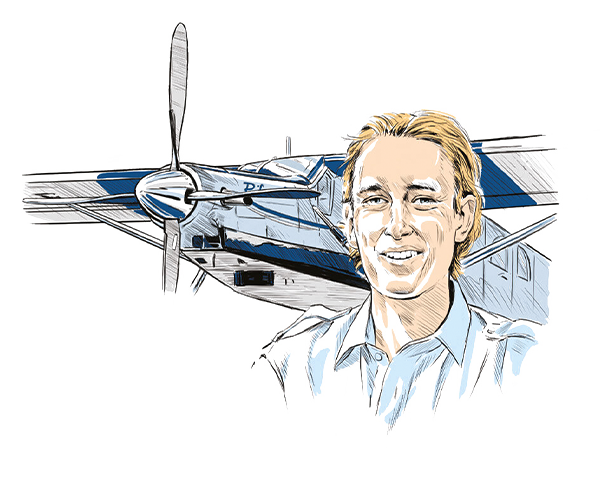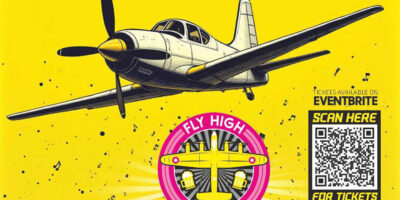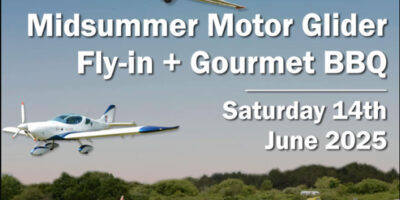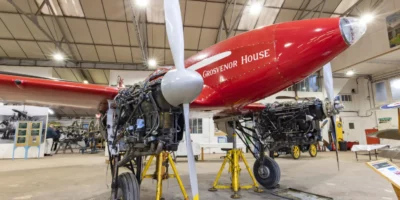I might be imagining it, but the skies feel a little busier than I remember them from past summers… Perhaps it’s because after all the months locked down, we are all into the ‘you only live once mindset’ and want to take advantage of any free time we have now before it’s too late. Or maybe it’s because we can’t travel abroad, we are enjoying home turf more. Either way, it is great to see! However, with all that extra traffic flying around the chances of an airprox are high, especially when departing or arriving at an airfield, and I can’t help but feel that the overhead join can cause more issues than it prevents when it comes to airproxes.
The principle is pretty sound. Fly overhead the runway from any direction 1,000ft above the circuit height, making a note of which direction the circuit traffic is turning in, and start turning in that same direction (or not, depending on which direction you’ve arrived from) to position yourself on the opposite side of the runway to the circuit traffic, the dead side. Then turn a bit more in the same direction and start descending to ensure you get down to the circuit height while still on the dead side. Turn a bit more to cross over to the live side and join the circuit at the start of the downwind leg. Then fly straight for a bit before turning a bit more to land.
All this while getting your aircraft set up for the impending landing. Also, don’t forget to keep an eye out and listen in on the radio to make sure you don’t bump into anyone else while thinking in three dimensions, as other aircraft might also be descending. Spotting other aircraft while turning is tricky, especially when you throw in the high- / low-wing conflict. They could already be in the circuit – or joining it – having just taken off, or even worse joining from the overhead at the same time as you just did. If that happens, hopefully your aircraft is faster than theirs so you can get in front and not have to keep wondering where they got to. Unless they do tighter circuits than you, in which case you should probably keep looking out for them. In fact, do that anyway until you’re on the ground, just to be safe.
“Save embarrassment… be prepared before you’re overhead”
Of course if you’re flying with passengers they’ll definitely appreciate the extended views of the airfield you’re about to land on, from the left or right side windows, depending on which direction you’ve elected to turn in, and won’t be wondering why on Earth they are having to endure another few minutes of your flying skills as the air becomes bumpier and bumpier the closer to landing you get.
Hopefully you are turning the same way as everyone else in the circuit, otherwise it’s a bit of a palava to re-orientate both your aircraft and mind to be the correct way around. Unless you are correct and it’s the other aircraft that have got it wrong. Save embarrassment, and be mentally prepared before you’re overhead.
There is another way to join a circuit pattern, which I much prefer, and that’s the direct join. This doesn’t involve aircraft all flying to the exact same point above an airfield like the overhead join but instead, you just join the circuit on the appropriate leg at circuit height. No need to get yourself dead side and descend while turning, no need to worry about aircraft at different levels to you. Just slot yourself into the circuit on crosswind, downwind or base and your landing is only moments away. Even better, if you happen to be coming from the same direction as the final approach course, you can join the final approach course and land!
OK, there are a few downsides. You do need to have an awareness of what’s happening in the circuit before you arrive, especially if it’s busy, but I would counter that by suggesting that a busy circuit is perhaps not the best place to be congregating above with anyone else wanting to join while you figure out what’s happening below. Perhaps better to keep away for a bit until you’ve sussed out how you’re going to slot into the melee. Oh, and remember to make sure you turn in the direction as the circuit pattern, as with the overhead join, but at least you only really have to keep an eye on the aircraft you are joining behind rather than wondering what the other aircraft in the overhead are doing.
You’ve only got to look at how IFR traffic is vectored for arrivals to know which way is better and safer. They do direct joins albeit radar vectored. It avoids having aircraft crossing over each other at different altitudes and keeps the flow of traffic efficient. The only time you get IFR traffic on top of each other is in a holding pattern. It would be much harder to try and vector aircraft around an overhead join. By vectoring each aircraft around a standard circuit, each aircraft doesn’t have to do lots of extra turns before landing and there aren’t any conflicts. Unlike in the overhead of a VFR airfield on a sunny Sunday afternoon. Bees around a honeypot anyone?
Currently dividing his time between a Cub, a Catalina… oh, and a PC-12
[email protected]







